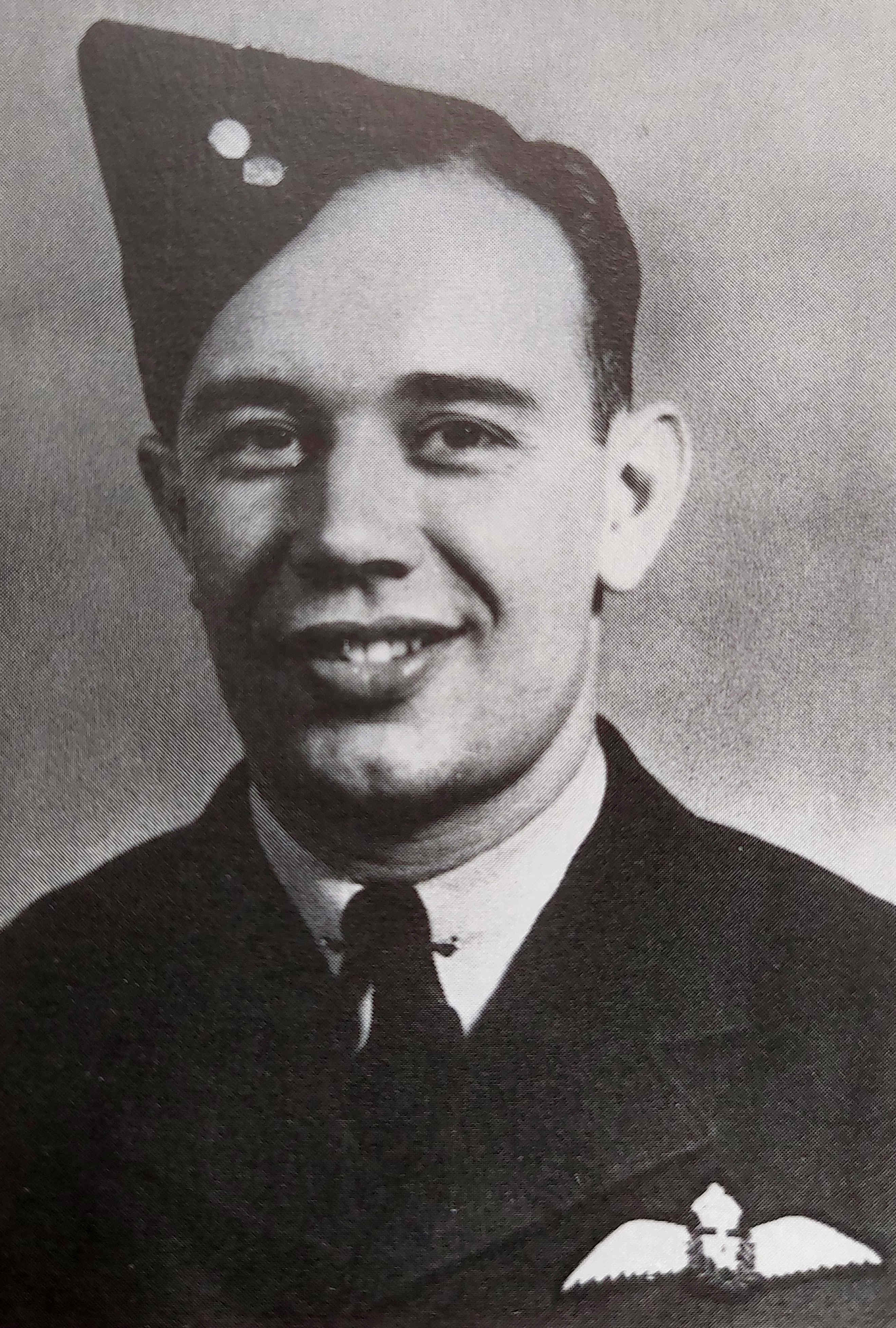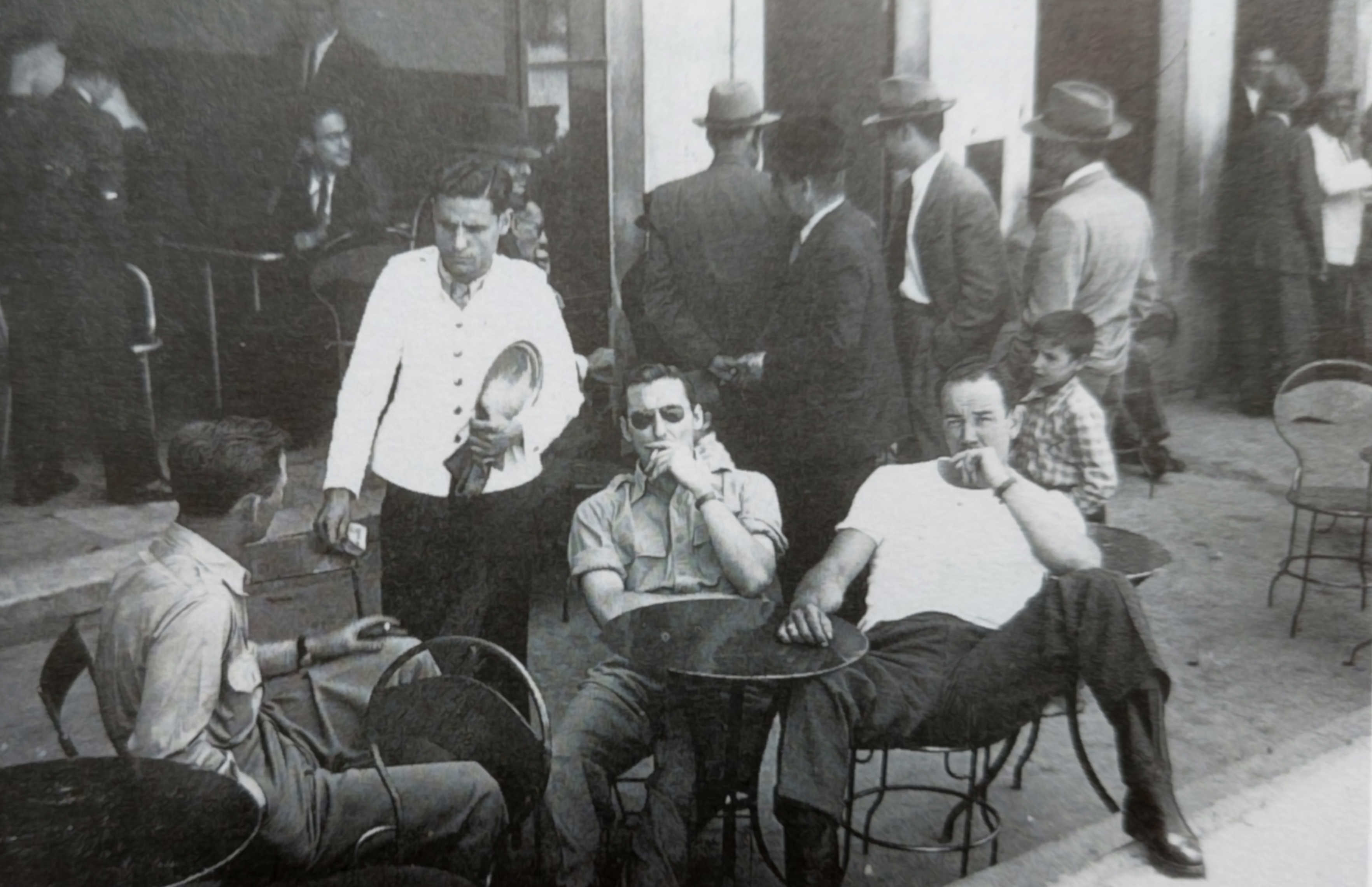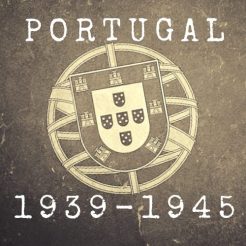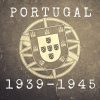Date
Location
Force
Aircraft
From-To
Crew
27-04-1943
Portela Airport - Lisbon
USAAF Ferry Command
Bell P-400 Airacobra AP292
Portreath (GB) → Port Lyautey (Marroco)
2Lt Richard L. "Dixie" Alexander USA

Richard "Dixie" Alexander in his RAF outfit
Richard “Dixie” Alexander left England in his Airacobra fighter, behind a B-17 that should guide his squadron to North Africa, but off the Portuguese coast he had to abandon the group due to mechanical issues.
With problems with the propeller and the electrical system, he headed towards land, entering Portugal through the Oporto area, before heading south until he reached Lisbon Airport where he landed on April 27, 1943.
In an autobiography published in 1988 – “They called me Dixie” – Richard Alexander recounts his adventures during the war and one of the chapters is dedicated to his time in Portugal. It is an easy-to-read book, but his accounts not always seem to coincide with other sources. Whenever non-coincident data appear, we will draw attention to the differences.
When he left the cockpit he was surrounded by Portuguese soldiers commanded by an officer who spoke English. They served him sandwiches and beers in one of the buildings. An hour later a member of the American Legation in Lisbon arrived with two other pilots who, according to Richard, were one American and one English.
Lisbon Airport records and other sources, however, ensure that they were Frank Atkins and William Raymond Allen – both Americans – who also arrived in Airacobras. Alexander also suggests that he made a solo landing, but he and Atkins reached the runway at 11:06 hours, while Allen did the same a minute later. I can’t find no reasons why they wouldn't have seen each other or known each other before.
Handed over to the Portuguese authorities, they went to Elvas on April 28th. Like other Allied pilots, he was admitted to the International Hotel where he says he found “good food, a snooker table and bedbugs”.
The days were spent drinking, gambling, walking around the city and surrounding areas, shopping and building model airplanes. He made friends with several officers from the local cavalry regiment and also with several civilians. Among them was a certain Jon Barabas (possibly João Barbas, a name that appears from time to time in other places), who invited him to the shooting club where he shot clay pigeons for the first time. Due to the quality of his performances, he was invited to participate in an international pigeon shooting tournament, which took place in Elvas, with more than 200 participants. He managed to qualify among the top 11.
At one point he injured his groin. Despite being treated by a doctor in Elvas, he was unable to improve and ended up having to seek help from a specialist in Lisbon.
Resources:
* “Aviões da Cruz de Cristo” – Mário Canongia Lopes
* "Spitfires e Hurricanes em Portugal - Mário Canongia Lopes.
* ARQUIVO ANA -Aeroportos de Portugal
*Book: "They called me Dixie" - Captain Richard L. Alexander
* Missing Aircraft Report - AFHRA, footnote.com

.
.
Charles Botvidson and Richard Alexander (on the right) in a coffee shop in Elvas
(Picture: They called me Dixie - Richard Alexander)
Alexander explains in a swashbuckling way that he and two other aviators embarked on an escape operation to Lisbon. The others where be tired of waiting for the repatriation and wanted explanations from the Legation, while he needed to be treated properly. They boarded a wood gas generator bus where Alexander shared the seat with a goose, which insisted on jumping into his lap.
The wood gas generator was widely used in Portugal during World War II because gasoline was scarce and expensive. It is a solid fuel burning system – wood or coal, for example – that produces gases that fuel a combustion engine. The vehicles carry a type of furnace in the back where they burn the materials. Constant stops are necessary to refuel the system.
It was during one of these stops that Alexander was approached by a Portuguese man, whom he had met during the shooting tournament. They entered Lisbon in this acquaintance's car.
Here we find further differences between Alexander's versions and other sources.
Part of the bureaucratic process exists in the Portuguese Military Archive and contradicts the alleged escape. Alexander was authorized to travel to Lisbon to “consult a specialist” on June 11, 1943 and traveled two days later. There is also no mention of the company of other pilots, as in similar processes.
On July 3rd, the American was still in the Portuguese capital, already in the company of his fellow countrymen Savoy and Botvidson – both lieutenants and pilots who had also arrived in Airacobras. Everyone was receiving specialized medical treatment. It was not possible to determine the dates on which the last ones traveled from Elvas to Lisbon.
Alexander claims that during one of his sorties he befriended some German pilots, who were also interned. In one of the conversations they warned him that they knew he was leaving and that the ships on which they were going to Gibraltar would be attacked and sunk.
He passed the information to other aviators gathered by the American Legation in Lisbon to be repatriated. After a debate they decided that each person would choose what to do. Of the nine airmen, only two continued their journey, while the others were arrested.
This is Dixie Alexander's version.
There is no record of German airmen interned during this period, but the men he encountered – more than once as he stated– may have been individuals linked to other German services in the Portuguese main city.
There are, however, other sources that do not corroborate this testimony. Jack Gompf, another of the pilots involved, makes no reference to German aviators in his personal accounts of the period. He explains that when they boarded, on July 7, 1943, they realized that the ship's crew was drunk and that in the bunkers there were dozens of sailors – mostly shipwrecked embarked in Lisbon - also completely drunk. The presence of so many passengers worsened the already poor health conditions. This lack of conditions led to the men refusing to board despite the insistence of the ship's commander and the American authorities.
The Caxias fort prison opened their doors for these rebel pilots. There, according to the memoirs, they contacted political prisoners of the Portuguese regime.
On July 25th, they flew to Algiers, where they were court martialed. The trial took place on the 27th. Richard Alexander, identified as the leader of the uprising, risked removal from the USAAF, imprisonment and payment of fines. The indictment defined him as "a man without any principles or military discipline". The rest of the men should also receive heavy sentences, as an example for others.
Despite the seriousness of the charges, the martial court – made up of 12 officers and presided over by Colonel Harold Neel – decided on light sentences. There was only a official reprimand and the obligation to be confined, for three months, to the bases where they were posted.
Among the mitigating factors was the lack of pilots and the difficulty of accusing them of cowardice, as six of them had fought as volunteers in the RAF.
Richard "Dixie" Alexander was one of these pilots, having been part of one of the Eagle Squadrons in England. These were RAF units that brought together American volunteers, long before the USA entered the war. The training of these pilots was carried out in Canada, where Alexander had traveled in late 1940 to volunteer himself for the air service. At the end of the following year he was already in the United Kingdom.
In September 1942, after the USA entered the war, most of these RAF airmen were integrated into the USAAF – the air force of the American army. It was in this condition that Alexander arrived in Portugal.
Returning to active duty he fought in North Africa, Sicily, Corsica and Italy.
On May 30, 1944, he was shot down while escorting B-24 bombers over Germany. He made an emergency landing in a P-51 fighter and managed to evade capture for a few days before being imprisoned. He was released at the end of the conflict.
The plane in which he landed in Portugal was taken to a military base on April 29th by Ensign Maia. He later joined the OK squadron of the Portuguese Military Aeronautics.
Carlos Guerreiro

